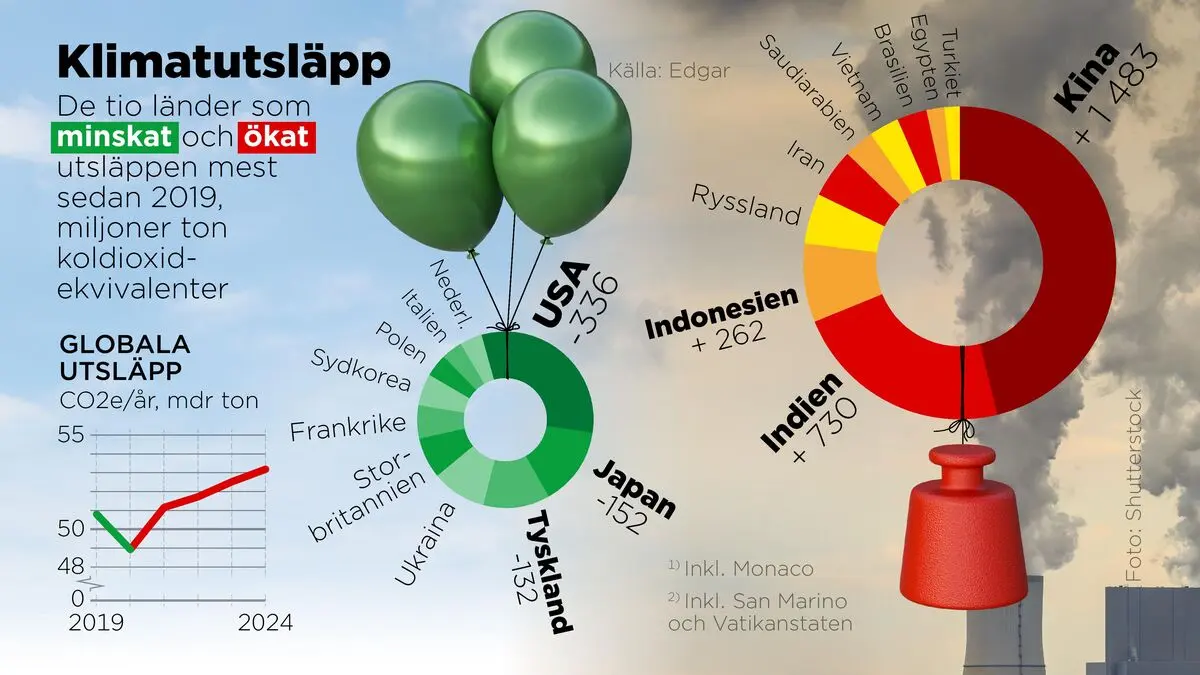The United States leads the way, followed by Japan and a group of EU countries, in terms of the largest reductions in absolute greenhouse gas emissions over the past five years, according to the EU database Edgar. Together, the countries have reduced emissions by 1 billion tonnes.
War reduces emissions
Something that stands out is that war-torn Ukraine and Lebanon have significantly reduced their emissions, in percentage terms the most of all and in Ukraine's case the fourth most in absolute terms.
"Ukraine's economy is at rock bottom. There has been a huge drop in activity," says Robbie Andrew, an emissions researcher at the Norwegian research foundation Cicero.
Much of what previously generated emissions – such as steel mills and electricity production – has simply been bombed to pieces. The war itself, in the form of burning buildings and domestic weapons production, also causes emissions.
But they do not at all outweigh the enormous reduction in activity that has occurred as a result of the war, when people cannot do what they usually do and factories are at a standstill.
Low hanging fruit
It may not be primarily high climate ambitions that are having an impact, according to Andrew. In the US, a market-driven transition from coal to gas is taking place, in Japan nuclear power plants are restarting, in the Netherlands, emission-intensive production of cement clinker has moved abroad. But EU regulations are also driving a transition, with Estonia, for example, swapping oil shale for greener alternatives.
Two other countries with large decreases during the period are the Czech Republic and Bulgaria.
"They are very dependent on coal for electricity generation. That means there is low-hanging fruit that some other countries are missing," he says.
Where emissions have increased sharply, it is often in developing countries where infrastructure and electricity production are being expanded.
The worst is found in South America
Guyana in South America has the world's highest growth rate during the period, according to Edgar. The increase is a breathtaking 68 percent, and is likely due to the country's discovery of oil deposits in 2015 that began to be extracted in 2020.
In absolute terms, a number of developing countries and a couple of oil nations account for large increases. In fact, China's increase alone over the period is greater than the ten countries with the largest decreases combined.
It's a bit like whatever you do, it's undone by China, but that's certainly not a reason not to reduce emissions. In the global emissions puzzle, all emissions have to come down, and their turn will come later, says Robbie Andrew.
Edgar (Emissions Database for Global Atmospheric Research) is the European Commission's emissions database, which in turn is based on data from, among others, the International Energy Agency (IEA).
The article is based on a comparison of total greenhouse gas emissions (carbon dioxide equivalents) per country in 2019 and 2024, and is thus a kind of snapshot of the situation that says nothing about emissions before or between the periods.
The countries with the largest percentage increase are mainly small countries where the figures may be uncertain and where increases are from small levels.





